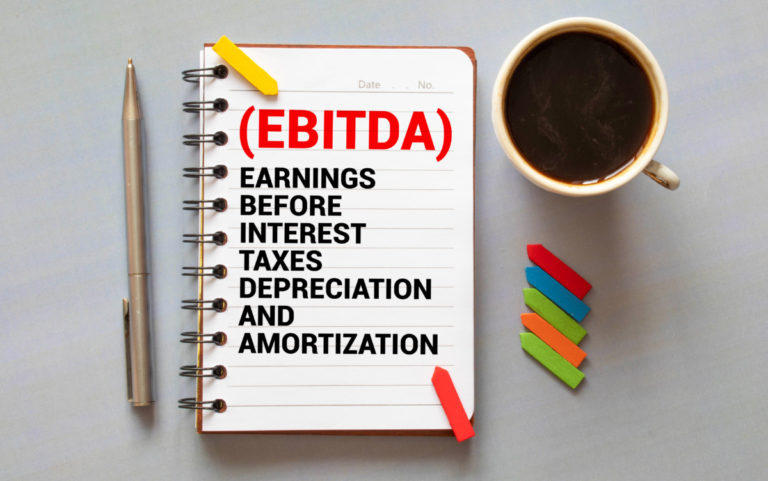What does EBITDA mean in simple terms, how is it used to calculate the profitability of a business, what formulas can be used to make a calculation – let’s look at examples.
Large Russian companies and enterprises use EBITDA for an objective assessment of activities, comparative analysis with other business entities in the same industries.
What is EBITDA
When should EBITDA be used
EBITDA is an adjusted indicator used for a comparative analysis of the activities of enterprises over a certain period of time. The multiplier is more objective for evaluating the results of the company’s work than profit, since costs that do not depend on activities in the current period are not taken into account. It also more accurately determines the achievements of the enterprise in the reporting period than, for example, sales revenue, since it takes into account the entire volume of current expenses.
Therefore, the administration and owners can more accurately see the result of the invested funds and their work.
The multiplier is calculated as the amount of net income received in the period minus the cost of paying interest on loans, borrowings, accrued depreciation, payments on shares or shares of participants.

For example, since the beginning of 2019, new workshops for the production of the same type of products have been created in three business facilities in one country. Analysis of their work for the first year using the “usual” revenue, net profit does not make it possible to determine their current achievements, weaknesses, reserves. Inclusion in expenses of indicators of depreciation of fixed assets, intangible assets, paid interest on loans, income tax, the result of asset revaluation distorts the real situation because:
- Different enterprises of the same industry do not use the same taxation systems (general system, or simplified). Therefore, the amounts of income tax given in the reporting do not allow determining the true effectiveness of their activities;
- Indicators of accrued depreciation of fixed assets and intangible assets do not contain real financial costs in the estimated period.
EBIT and EBITDA
Less commonly used in the business environment is another indicator ebit, for the calculation of which net income before tax is taken, minus interest on loans without adjustment for depreciation and the results of asset revaluation.
For Russian entrepreneurs and accountants, the concept of operating profit is more familiar, but its amount is also affected by accrued depreciation, which distorts the actual result of activities in the analyzed period.
EBITDA calculation
Adjusted EBITDA can be calculated using two methods – direct and reverse. In international practice, a “reverse account” is more often used, which is more familiar to foreign investors – the net profit of the object of analysis in the study period is adjusted by:
- income tax, including the current one (-);
- accrued depreciation of fixed assets and intangible assets (-);
- extraordinary income (-) and expenses (+) not related to the main activity;
- interest payable (-) and receivable (+) on loans;
- results of revaluation of assets – revaluation (-), markdown (+).
Calculation examples EBITDA
Example 1. The company’s net profit for 2019 was 500 thousand euros. Accrued current income tax in the amount of 82 thousand euros, tax refund (adjustment of deferred taxes) – 3 thousand euros. Depreciation of fixed assets in the amount of 21 thousand euros, intangible assets – 4 thousand euros was accrued. Interest on loans in the amount of 20 thousand euros has been paid. The assets were revalued for a total amount plus 6 thousand euros. Extraordinary income, expenses were absent. Proceeds from the sale of 2500 thousand euros.
Calculate EBITDA using the reverse method = 500+82-3+25+20-6= 618 thousand euros.
In Russia, for domestic users, the multiplier is more often considered a direct method according to financial statements, based on the information contained in the Profit and Loss Statement Form No. 2.

Proceeds from the sale of products, goods, services – the cost of goods sold, products – commercial expenses – management expenses + the amount of depreciation of fixed assets and intangible assets in the reporting period;
Example 2. In 2019, the company’s sales revenue amounted to 90 million rubles, cost of goods sold – 64 million rubles, commercial expenses amounted to 7 million rubles, management costs – 3 million rubles Depreciation of fixed assets was accrued in the amount of 1.6 million rubles, intangible assets – 0.1 million rubles.
EBITDA = 90-64-7-3+1.6+0.1= RUB 17.7 million
EBITDA margin
EBITDA based values used by investors and managers.
Absolute economic indicators do not always make it possible to assess the performance of a commercial entity, its readiness to make payments on time, and to perform an accurate comparative analysis by peers for an identical type of activity.
EBITDA margin
For this, a relative value is used – profitability (EBITDA margin). The EBITDA profitability ratio is calculated as the ratio of the absolute size of the indicator to the amount of revenue in a certain period.
According to the source data of Example 1:
EBITDA margin = 618/2500= 0.2472
For investors, the economic security of the object of their investments, low risks of potential bankruptcy of the company are important. To this end, the company’s management often provides them with information about what part of the obligations the company is able to cover with the accumulated current income, most accurately expressed as EBITDA:
Debt to EBITDA
The debt to EBITDA ratio (debt ratio) is calculated as the ratio of all the company’s liabilities as of the reporting date to the EBITDA result obtained for the corresponding period of activity.
For a more accurate calculation, the net debt/EBITDA indicator is often used, which shows how much net debt the company is able to repay based on the results of the current period. To determine the net debt, the amount of short-term and long-term loans and credits of the enterprise is reduced by available cash and cash equivalents.
In the Russian company from example 2, as of December 31, 2019, the amount of all liabilities amounted to 20 million rubles. (including 2 million rubles for short-term and long-term loans). The balance of cash and cash equivalents as of December 31, 2019 is RUB 1.146 million.
The total debt to EBITDA is 20/17.7= 1.13.

Among economists and businessmen, it is considered normal if this value does not exceed 3 units. If the coefficient is higher than 3, this is evidence of a too risky strategy for settlements with creditors, which increases the risk of bankruptcy of the enterprise in the future.
The ratio of net debt less cash balance to EBITDA is:
(2-1.146)/17.7=0.048 and indicates a high level of debt repayment guarantee by the company considered in example 2.
EV/EBITDA
EV is the sum of market capitalization and net debt of a business entity.
Example 3. The market capitalization of the company from example 2 as of December 31, 2019 was 62 million rubles. Net debt RUB 0.854 mln.
As a result, the EV/EBITDA multiple will be (62+0.854)/ 17.7= 3.551.
Thus, the company will fully pay back its cost in less than four years.
Pros and cons of EBITDA
The multiplier simplifies the process of comparing the achievements of companies in similar industries both in the same region and in different countries. Calculations of relative EV/EBITDA and debt to EBITDA indicators are especially popular in the world practice to assess the payback of a business and the degree of its solvency.
But when evaluating long-term prospects, EBITDA is applied less. This requires a comprehensive multilateral analysis of the payback of capital investments, the effectiveness of attracting loans and loans.
Interesting facts
- Financial analysts in different countries use debt to EBITDA, EV/EBITDA ratios in large-scale studies to evaluate large companies in certain industries and their degree of attractiveness to investors.
- In Russia, it is often used for a comparative analysis of the activities of well-known competitors in industries (for example, Magnit and Dixy retail chains, oil “monsters” Gazprom, Lukoil, Tatneft).
- Some major investors are wary of EBITDA-based multiples, such as Warren Buffett, the largest investor.













